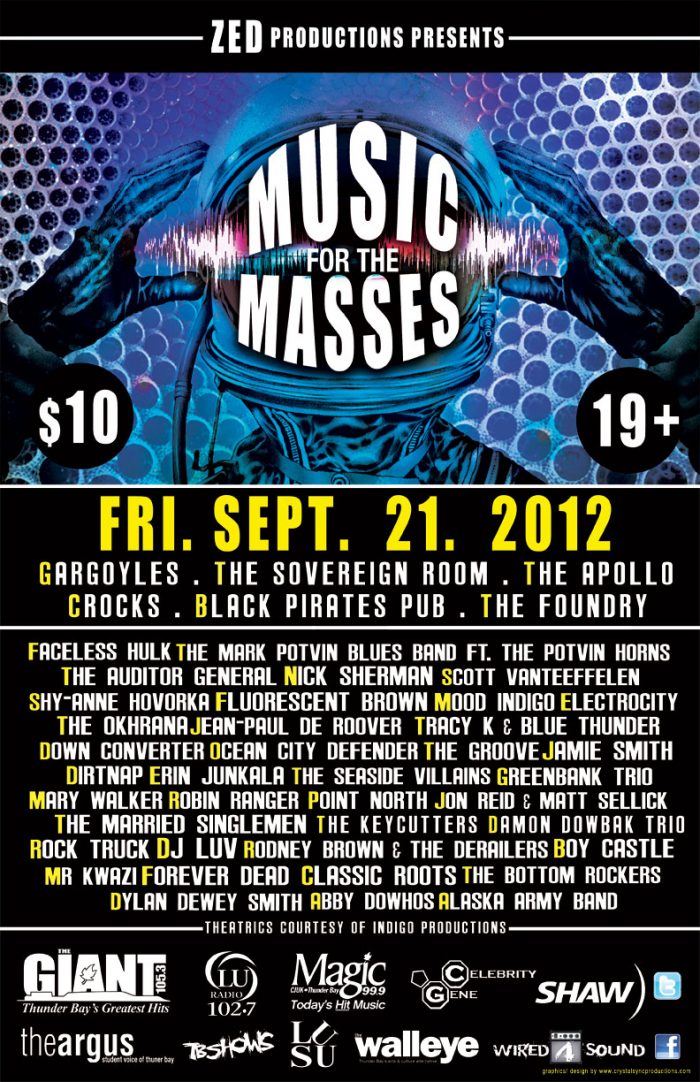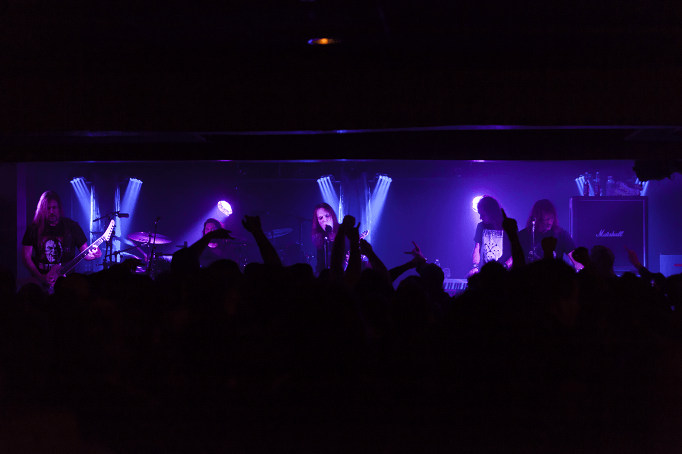We chose 5 music organizations to highlight this month, who work hard behind the scenes to promote everything from bluegrass to the blues.
The Thunder Bay Bluegrass & Old Tyme Music Association
By Kris Ketonen
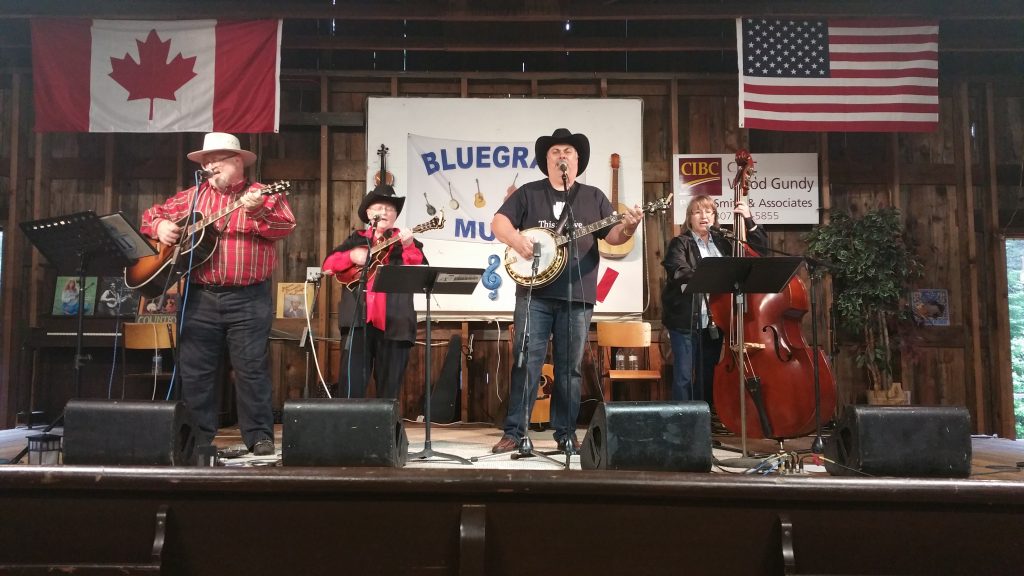
Thunder Bay’s bluegrass and old-time music players are a close-knit, passionate bunch. “The people are very nice,” says Eddy Van Ramshorst, a committee member of the Thunder Bay Bluegrass & Old Tyme Music Association. “Good friendships. Everybody knows each other.”
The association was formed years ago as a way to promote bluegrass and old-time music in Thunder Bay. Today, the group’s members play regular concerts throughout the city, and the association’s largest event is its annual Thunder Country Bluegrass Music Festival, which takes place every April. But central to the association—and Thunder Bay’s bluegrass community as a whole—are the weekly public jams, which happen at 7 pm every Wednesday night at the Vickers Heights Community Centre on Broadway Avenue.
“Bluegrass is based on getting together and jamming,” Van Ramshorst says. “We don’t need to stand up, we don’t need to have microphones. We like to join in vocals and harmonies. That’s a big thing in bluegrass.”
As far as the overall Thunder Bay bluegrass and old-time music community, Van Ramshorst admits it’s in a bit of a lull. “We’ve got only a few…young people now playing,” he says. “But if you just go across the border, to Minneapolis, they’ve got dozens and dozens and dozens of kids, that are eight, 10, 12 years old, and are masters of all these instruments. In Minnesota, bluegrass is naturally staying alive and healthy. In Thunder Bay, we don’t have enough young or middle-aged people that are into the genre right now. It’s going to have to naturally change on its own, I think.”
For more information, visit tbbotma.weebly.com.
Consortium Aurora Borealis
By Ayano Hodouchi-Dempsey
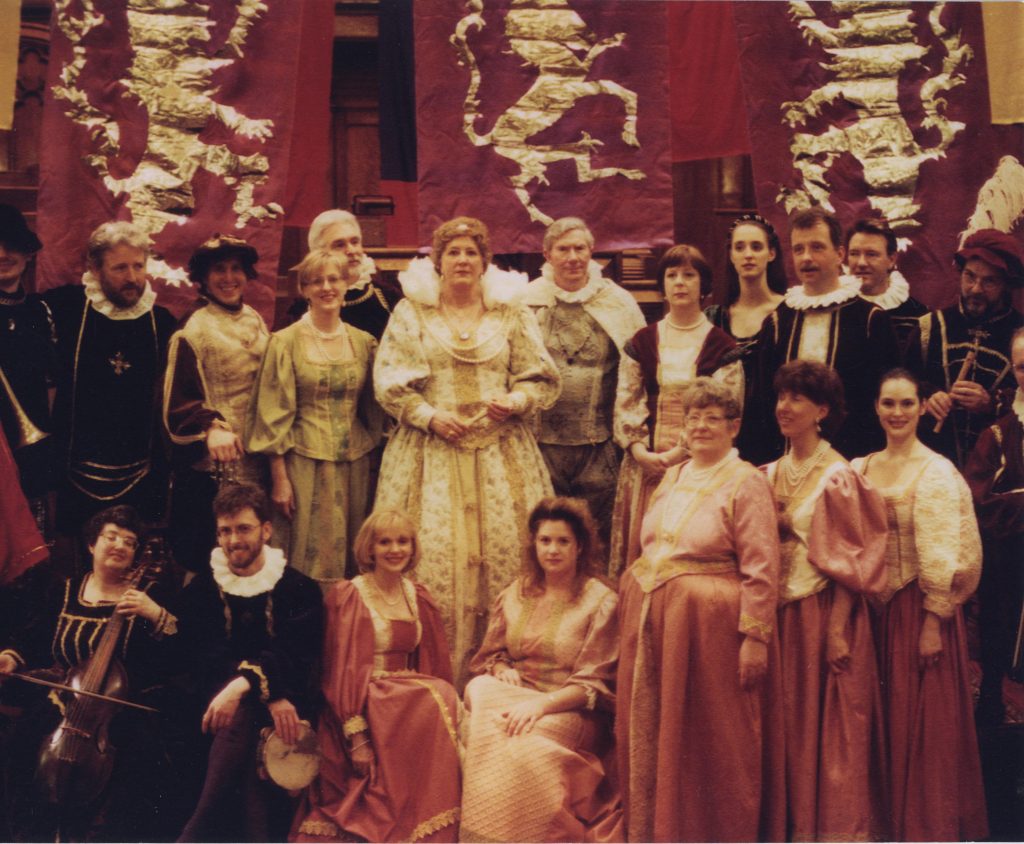
When Elizabeth Ganiatsos arrived in Thunder Bay in 1974 (after answering an ad in The Globe and Mail for a string instructor at the Catholic District School Board), she found the city to be a musical desert. Accustomed to the range of classical music concerts available in Toronto, particularly early music (Renaissance and Baroque, her speciality) she decided to make her own—“For the sake of my soul!” Ganiatsos exclaims.
Consortium Aurora Borealis was established in 1979, with a mission to educate as well as to entertain. A music historian, Ganiatsos also taught early music history at Lakehead University and wanted live examples of the music to supplement what she taught. The Consortium places an emphasis on historical approach to music, performing on reproductions of historical instruments and adhering to authentic performance styles.
Initially, the Consortium used a little harpsichord that belonged to the symphony, but they “fundraised like mad” and acquired their first harpsichord, a Flemish-style double-manual (two rows of keyboards). A highlight of the early years was a quadruple harpsichord concert in March 1989; Ganiatsos managed to somehow wrangle four harpsichords in the city and put on an evening of Johann Sebastian Bach’s concertos for one, two, three, and four harpsichords.
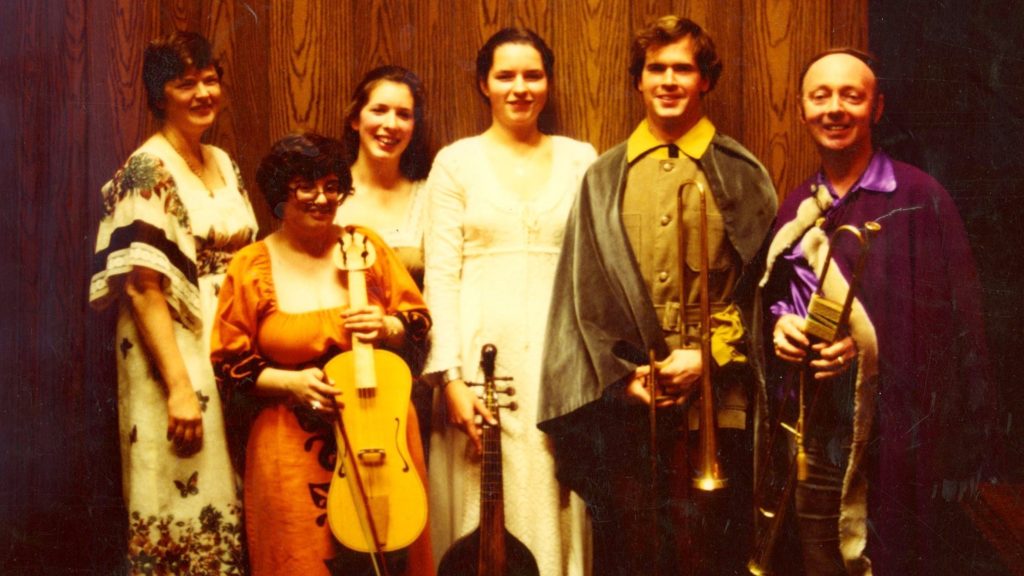
Supported by the Ontario Arts Council, donors, and subscribers (they have over 180 annual subscribers, a very large number considering their concerts typically have an audience of 400) the group continues to bring music and musicians that would otherwise not be heard in our city. Last year, they celebrated their 40th season and successfully fundraised to replace their aging harpsichord.
An eternal doer, Ganiatsos is still the organization’s artistic director, despite moving back to Toronto after retirement in 2003. “As long as I live, I know I’m going to be doing this somewhere.”
Currently she is busy programming the 2022/23 season, booking the Rolston Quartet, which just performed in Thunder Bay this September. “The ensemble really loved the energy of our audience,” says Ganiatsos. “Without exception, the artists that we engage are struck by the great appreciation of the people of Thunder Bay. That speaks really well of our community—the performers feel the warmth and support.”
For more information, visit consortiumauroraborealis.org.
The North Shore Music Association
Story by Adrian Lysenko, Photos by Sarah Reller
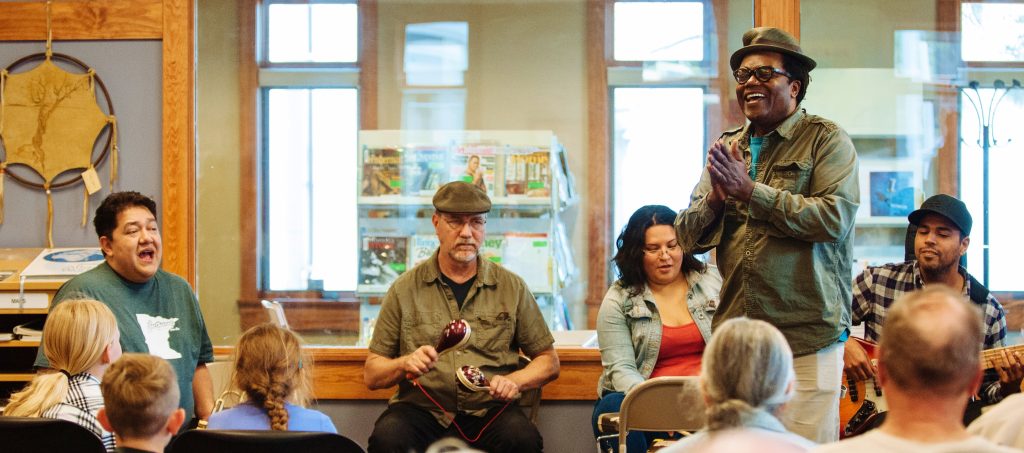
Part of the North Shore Music Association’s (NSMA) mission is to inspire lives and create community by offering exceptional live performances and for more than 30 years, they’ve been doing just that.
Formed in 1985, the NSMA’s first concerts/dances were most often held at the Schroeder Town Hall, but also included other venues such as schools, the old Grand Marais Playhouse, and other spaces. “The founders could see there were very few musical events happening on the North Shore and that there was an ever-increasing visitation rate by tourists. It seemed that providing music would be another good draw for people to visit the North Shore,” says Wayne Russ, NSMA’s Grand Marais vice chairperson. ”It may not happen as much today, but folks would travel considerable distances to attend our concerts. There were always people from Grand Marais, plus as far away as Duluth and Thunder Bay. Sometimes we had 150 attendees; sometimes it was down to 30.”
In 1986 and 1987, NSMA produced the North Shore Music Festival, a three-day multi-stage summer music festival that included workshops, concerts, and dances. Since 1988, NSMA has presented a monthly concert and dance series featuring national, regional, and local artists.
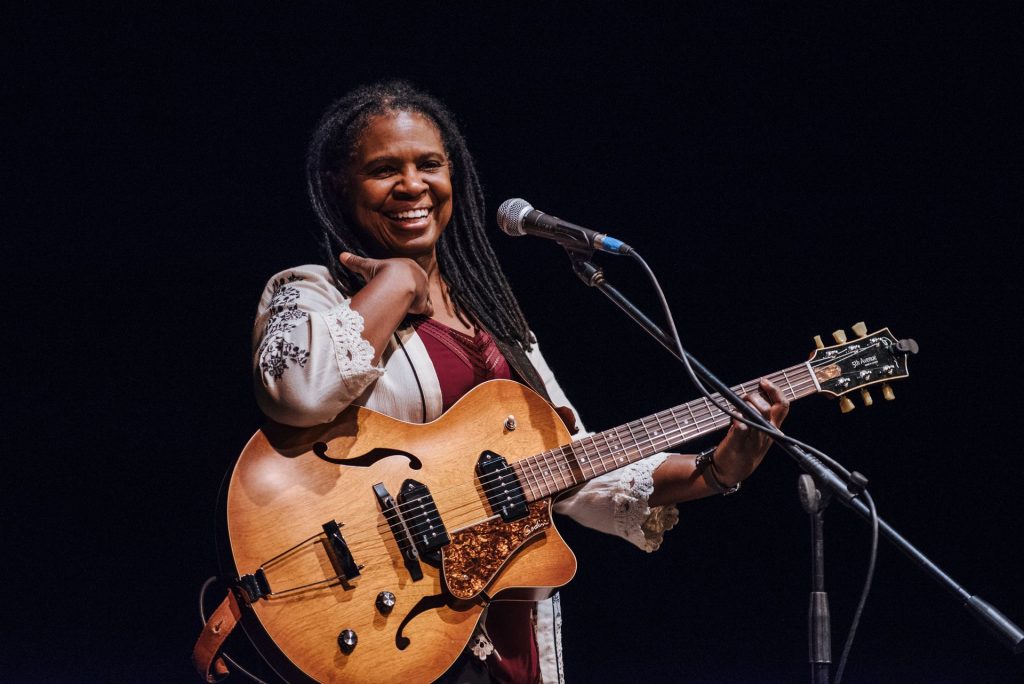
It was in 1998 that things changed for the organization, when they established a home in the Arrowhead Center for the Arts (ACA). “The ACA provides our community with a space dedicated to an interface between artists and attendees, whether the art form presented is theater, dance, or music,” says Russ. “When NSMA moved into the ACA, we finally had an office, an equipment storage room, and a performance space and green room all under one roof. Setting up sound reinforcement became easier, and we sold our sound-equipment trailer.”
Over the years, NSMA has put on a variety of popular concerts, including blues pianist, singer, and songwriter Kelley Hunt, guitarist Leo Kottke, and singer-songwriter Peter Yarrow. “[They] all sold out, and we had to turn away overflows of disappointed people at the door,” says Kate Fitzgerald, NSMA’s director.
The organization also partners with other area nonprofits at least two or three times a year. “We frequently partner with area schools—including the Sawtooth Mountain School District and Great Expectations School—to bring music education programming to local youth. This includes short residencies and workshops,” says Fitzgerald.
For the future, NSMA plans to keep providing the community with musical performances and educational outreach that organizers say concert-goers have come to expect and appreciate. “The important niche we continue to fill in Cook County is a demand for a wide variety of music and teaching/school programs that broaden our community’s awareness and sense of belonging within the national and global communities,” says Russ.
For more information, visit northshoremusicassociation.com.
Sleeping Giant Folk Music Society
By Kat Lyzun
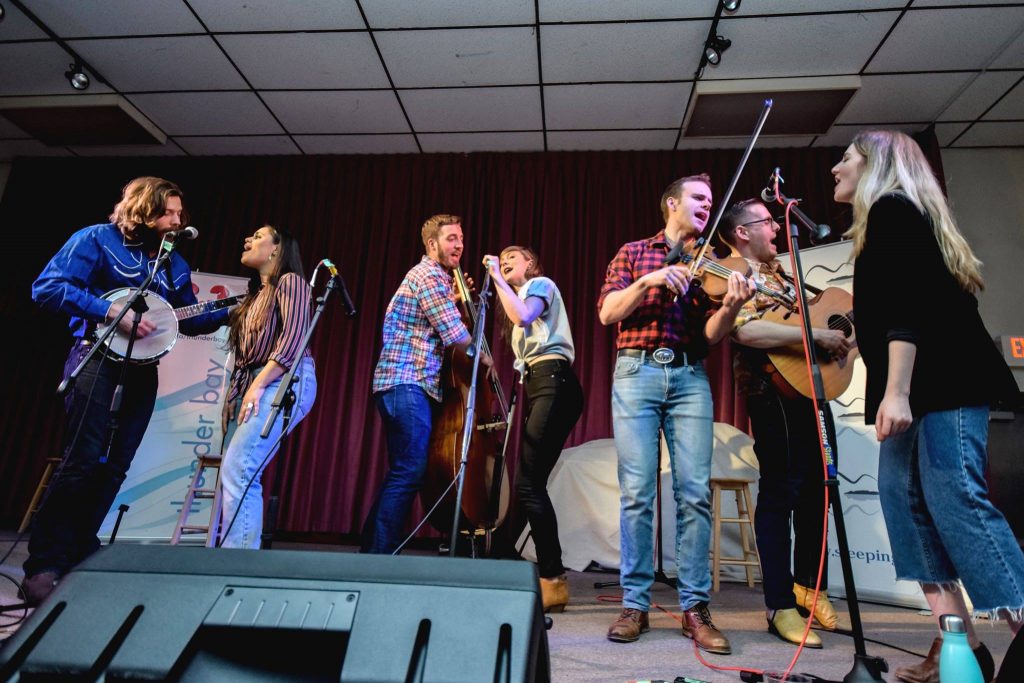
In 19 years, the Sleeping Giant Folk Music Society has hosted some incredible performers: The Good Lovelies, Blackie and the Rodeo Kings, Scarlett Jane, Union Duke, as well as The Mudmen. For Elly Tose, an original member of the society, it’s nearly impossible to pick a favourite.
“One of the best concerts we ever had was The Lost Fingers [a gypsy jazz band from Quebec] doing cover tunes in the style of Django Reinhardt. They were just so entertaining and unique—it was incredible,” she recalls. “We also had an amazing Gordon Lightfoot tribute concert with about 11 performers doing different interpretations of his music.”
“Our concept of folk music is probably a lot broader than people think,” she adds. “We’ve had traditional singer-songwriter shows and pipes and drums, but also bluegrass, Louisiana blues, and funky jazz groups that fill the stage and have people dancing, hooting, and hollering.”
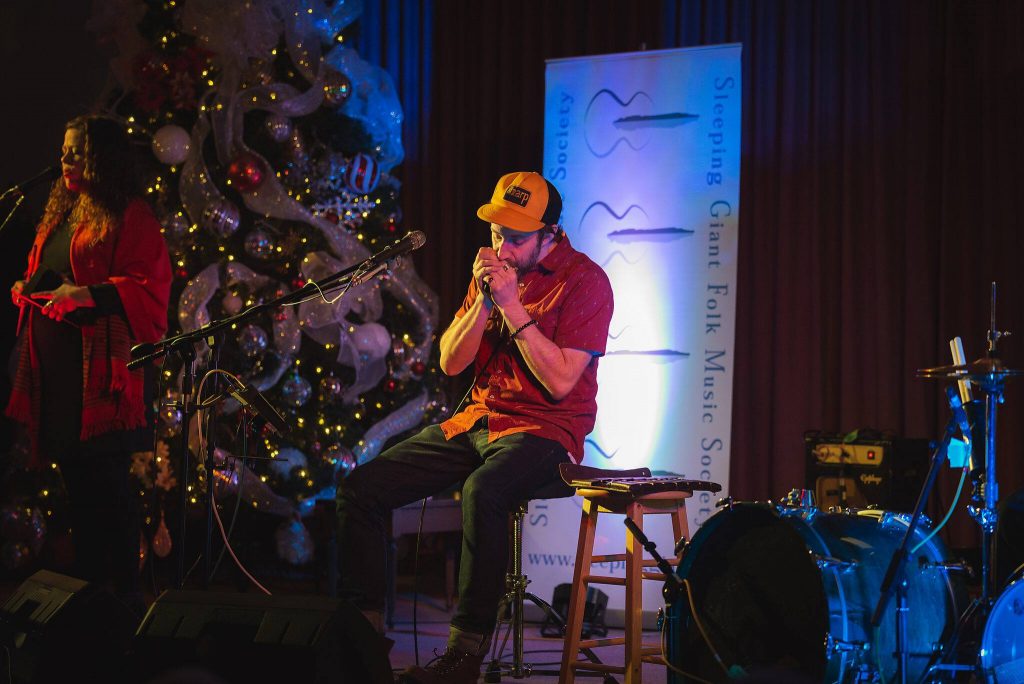
The Sleeping Giant Folk Music Society was born out of a desire to fill the niche between large auditorium performances and bar shows. In the late 1990s, the city’s music scene was vibrant but lacked a venue for intimate, interactive concert experiences. In early 2000, former CBC host and music lover Gerald Graham put out a call for people who might be interested in bringing something new to the scene. Tose was one of those who showed up at the first meeting and never left. She now considers the core group of organizers among her best friends.
“We had our first concert at The Outpost and brought in Ian Tamblyn, who was gracious enough to do the show cheaply and bring lots of friends,” she laughs. “We had a survey for people about who they’d like to see, what price range they would pay for tickets and so on. There was a lot of interest, so we kicked it off with our first concert series that fall.”
Nearly 100 shows later, the society’s formula still works: put on between four and six concerts a year in the fall and spring, bring in a balance of established and emerging groups and solo acts, and provide musicians with a venue where they can genuinely share their art with an engaged audience. “What we do is about the performance and the performers, that they have a good experience and that the people who want to hear them, can.”
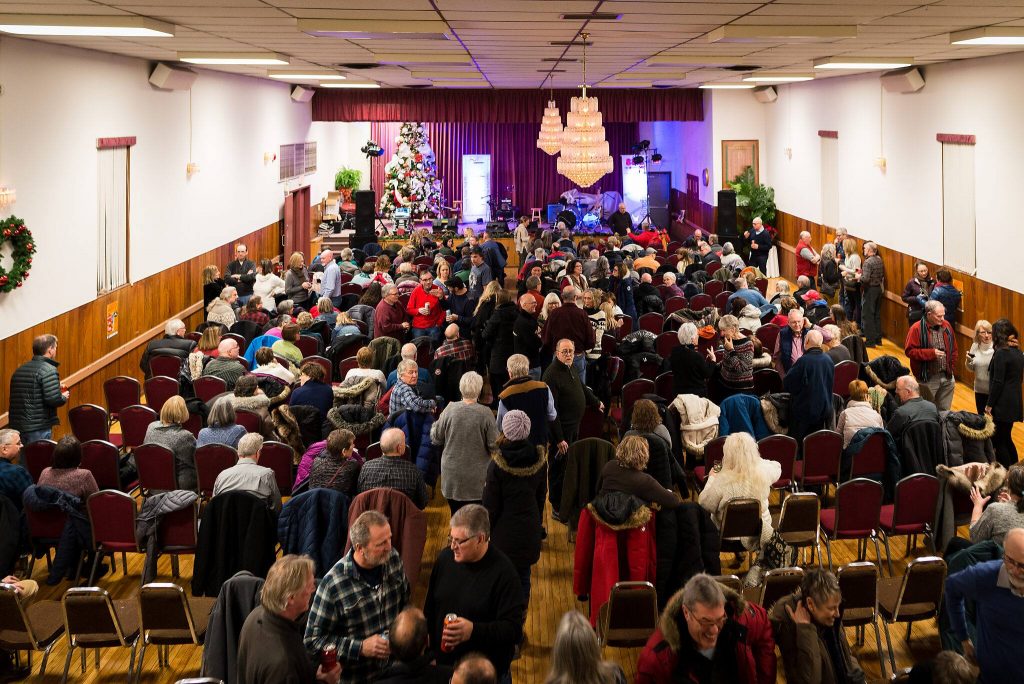
Tose says they hope to continue to bring in enigmatic singer-songwriters like Benjamin Dakota Rogers, who will be here in February, immensely talented musicians like Ariel Posen, who blew fans away at this year’s Thunder Bay Blues Festival and will return in March, and high-energy, creative bands like the Slocan Ramblers, who will be on stage November 30.
Reflecting on the past two decades, Tose marvels at the fact that while venues have changed and funding has ebbed and flowed, the Sleeping Giant Folk Music Society is largely the same as it always was: a group of good friends putting on great concerts. She hints that plans are in the works for their big anniversary celebration, and that after 20 years it may be time to start passing the torch on to others. On the other hand, they are still having too much fun.
The Sleeping Giant Folk Music Society concerts are held at the Port Arthur Polish Hall on Court Street. Visit sleepinggiant.ca for this season’s lineup and ticket information.
Thunder Bay Blues Society
By Tiffany Jarva
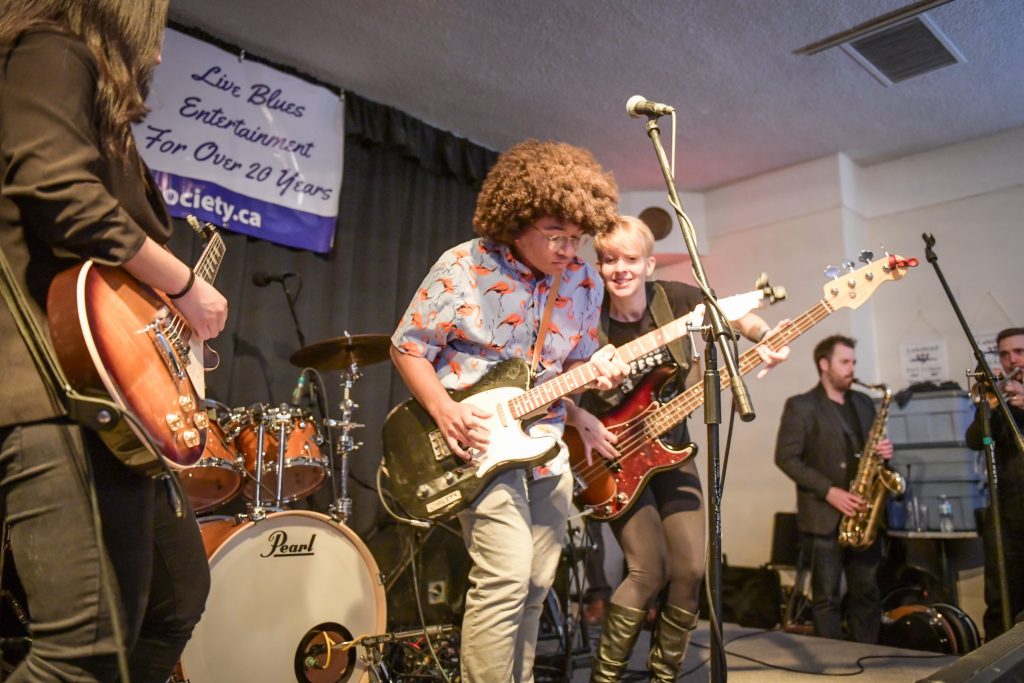
There is a reason why the Thunder Bay Blues Society’s “Real Deal Chicago Blues” event featuring Grammy-nominated John Primer sold out in two weeks. “The word is out that we are bringing in higher-level performers,” explains president Rob Croves. “And people are having a really good time. They come to listen to quality music, dance, and have fun.”
Vice-president Murray Armstrong agrees whole-heartedly. “It’s a symbiotic relationship,” says Armstrong, former Thunder Bay Blues Society (TBBS) president and one of the founders of the non-profit volunteer-based organization. “People want to dance and bands want to see people dancing.” Croves laughs, telling the story of blues musician Ray Fuller, booked to a sold-out crowd this past May, who mentioned while on stage that it was good to see that people in Thunder Bay like to dance just like those in Texas! Armstrong explains that the quality of musicians being booked doesn’t happen by accident—performers have been seen and are recommended by someone on the board of directors and put to a vote.
Every year TBBS tries to host two main events, featuring talent from out of town, usually in the spring and fall. They have also recently started the very well-received Blues House Parties, featuring local bands and a blues jam to end the night. Plus, they host the annual local challenge to send a representative to the International Blues Challenge in Memphis. This year’s winner was Sunday wilde Duo. “The competition is stiff,” says Armstrong. “It’s an enormous opportunity, allowing local people to go on an international stage which exposes them to peers and to learn more about the blues culture.” TBBS alternates between sending a solo/duo and a band to the competition.
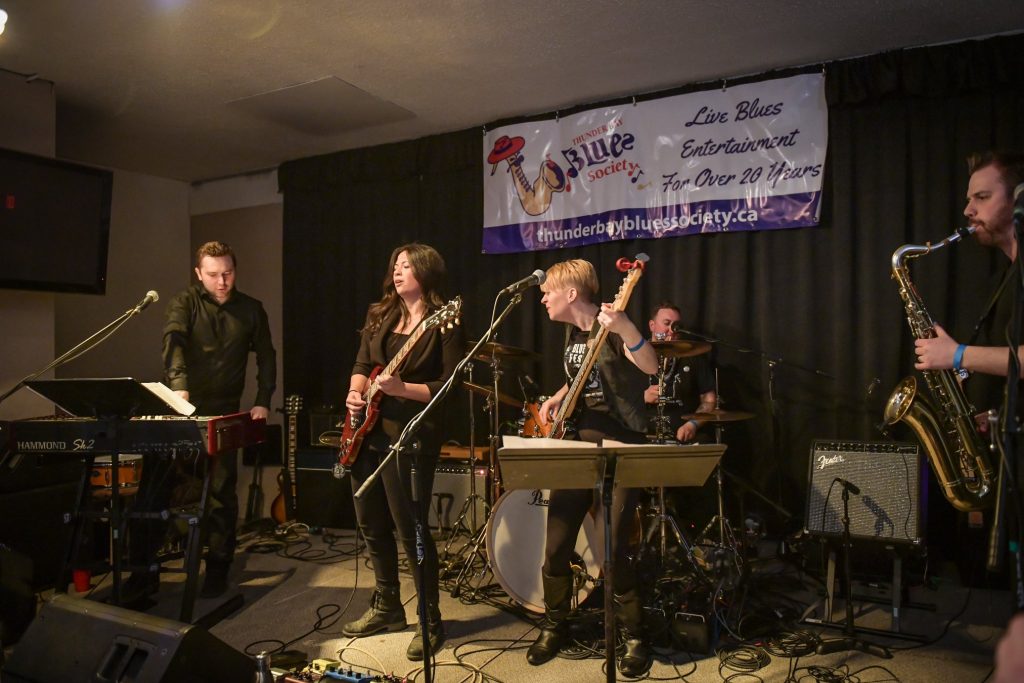
Both Croves and Murray discovered blues music when they were in college. “Blues is so versatile,” says Murray. “If it wasn’t for the blues there would be no rock.” Croves concurs. “It is very appealing. It’s a lot of fun and I think in every person there is a blues fan but they may not have discovered it yet.”
In 1998, Murray and a handful of others started TBBS, which originally helped launch the Thunder Bay Blues Festival before it become a community entity of its own. TBBS continues to be a self-funded, successful arts organization more than twenty years later. It’s the only Blues Society between Toronto and Saskatoon. Recently Croves took over as president and has watched TBBS membership almost double. Murray believes this is because the music especially appeals to people over 40 who don’t have many live venues in the city to go to where if feels age-appropriate, clean, and safe.
“It is really about promoting fun and continuing to appreciate the genre of music known as the blues,” says Croves.
The next Blues House Party is in November. To learn more about upcoming TBBS events or to buy an annual membership ($15/person or $20/couple), visit thunderbaybluessociety.ca.


